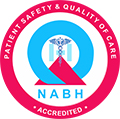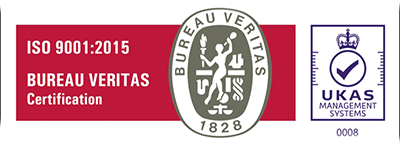The functioning of the organ and tissue is evaluated using Positron Emission Tomography (PET). In this test radiotracers are used in small quantities. A camera designed for this purpose is used to evaluate the organs and the results are captured as an image. Only the best scan center in Chennai is authorized to conduct this test. The test helps to identify the changes in the body’s cell level predicting the starting stage of the disease even before the imaging tests can make it out. PET is a branch of nuclear medicine used to diagnose conditions like severe heart diseases, cancers, endocrine, gastrointestinal disorders, neurological deficiencies and other abnormalities in the body. The molecular activities in the body are located using nuclear medicine. This gives a chance to identify any disease at an early stage.
Also Read : A Complete Guide On PET Test/CT Scan Preparation Process
The imaging procedure is noninvasive except for the intravenous injections. The process is painless and assists in evaluating any medical condition. The scan uses radioactive materials like radiotracers. Based on the type of the examination, the radiotracer is injected, inhaled or swallowed into the body. The medicine is accumulated in the organ of the body that needs to be examined. The radioactive emissions are detected using an imaging device or a special camera that captures images and molecular information.
During the PET scan procedure, the images can be superimposed on a computed tomography for better viewing and this process is called co-registration or image fusion. This way, two different images are co-related and interpreted as one image. It leads to accurate diagnosis and delivers precise information. Experiments are on to make a single photon emission computed tomography and positron emission tomography units that will be able to perform both the imaging tests simultaneously.
PET scan measures the body functions like blood flow, sugar metabolism and oxygen use helping doctors to evaluate the organ and tissue functions. CT imaging is a X ray equipment used to produce multiple images of what is inside the body. The images are interpreted on a computer monitor. It provides anatomic information.
Uses of PET scans
- It is used to detect cancer
- The spread of cancer cells in the body
- Administer the effectiveness of the treatment
- Determine the return of cancer post treatment
- Evaluate the blood flow
- Verify the after effects of a heart attack on the heart
- Identifying which heart muscle would benefit from the procedures
- Evaluating brain abnormalities like nervous system disorders, seizures, memory disorders, tumors, etc.
- Mapping the functions of the heart and the brain
PET Procedure
The procedure can be performed on an outpatient basis or the patient can be hospitalized based on the health condition. The patient will be administered a radiotracer through an intravenous catheter right into the vein. In certain cases, the patient is asked to inhale it as a gas or swallow as a medicine. The process will take 60 minutes approximately as the radiotracer travels through the body and gets absorbed in the organ or tissues that needs to be studied. The patient will be asked to stay still while he/she is moved into the PET scanner and the imaging commences. The CT scan is performed first followed by PET scan. In certain cases, another CT scan will follow after the PET scan. The total scanning time takes around 30 minutes. Based on the condition to be diagnosed, tracers are used. The time of the tests may vary depending on the organ or tissue to be examined.
Possible Side effects
The radioactive medicine is sent into the body and the dosage depends on the body part to be examined. The radiopharmaceutical dosage is very minimal, yet the patient is exposed to a low level of radiation when the test is conducted. There are no long term side effects for administering low levels of radioactive materials. Though some noted side effects include bleeding, swelling and soreness at the injection site. Allergic reactions may occur, though it is extremely rare.
Results explained
The PET scan detects cell metabolism in the body. In the case of cancer cells, more FDG collects because cancer cells use more glucose. Cancerous cells are highly metabolic when compared to normal tissues and hence appear different on the scan. To rule out abnormalities, further investigation is necessary. The use of PET scan for cancer detection is still being researched. Moreover, PET scan cannot tell if the tumor is benign or malignant. Similarly, smaller sized and less aggressive tumors cannot be detected in PET scan. For best results, PET scans are taken in combination with X rays, bone scan, MR imaging or CT imaging. Sometimes PET/CT scan is clubbed with computed tomography providing complete information on the tumor location, growth and spread of the disease. Additional treatment is given if any abnormalities are detected. This can lead to more tests and procedures. Once the test is complete, you can resume your diet and other regular activities.









